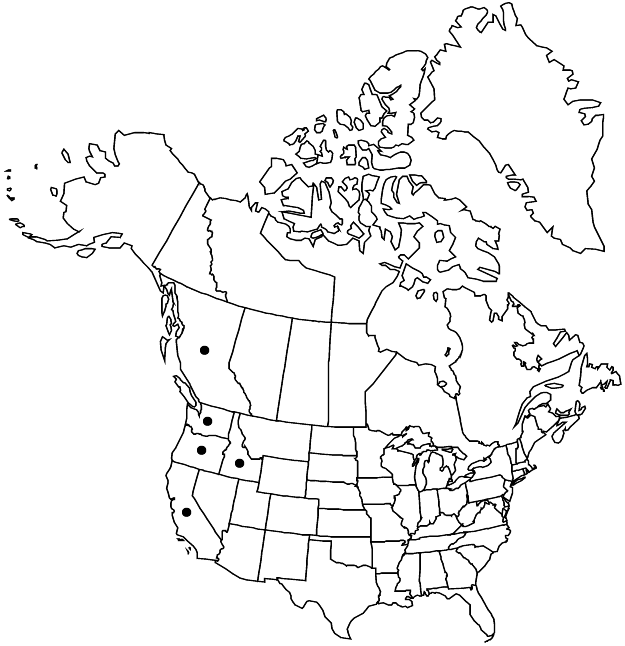Vaccinium deliciosum
Mazama 2: 103. 1901 ,.
Plants forming small clumps to extensive open colonies, 0.5–15 dm, rhizomatous; twigs green, sometimes glaucous, ± terete, rarely angled, usually glabrous, rarely hairy along veins or puberulent. Leaf-blades usually glaucous, obovate, oblanceolate, or, rarely, elliptic, 17–35 × 9–17 mm, margins usually serrate for at least distal 2/3, surfaces usually glabrous, eglandular or, rarely, glandular throughout, often glandular-hairy along midvein. Flowers: calyx glaucous, lobes indistinct or shallow, glabrous; corolla pink, creamy pink, or red, globose to globular-urceolate, 4–6 × 5–7 mm, thin, glaucous; filaments glabrous. Berries usually blue, glaucous, sometimes dull black, maroon, or red, 9–13 mm diam. Seeds ca. 1 mm. 2n = 48.
Phenology: Flowering late spring–early summer.
Habitat: Alpine meadows, subalpine coniferous woods, talus slopes
Elevation: 600-2000 m
Distribution

B.C., Calif., Idaho, Oreg., Wash.
Discussion
Vaccinium deliciosum produces especially flavorful berries. Research at the University of Idaho and Washington State University identified 31 aromatic flavor compounds in the fruits. Despite its outstanding flavor and large fruit size, it is harvested less than is V. membranaceum because it has a smaller range and is less abundant there than its black-fruited congener. Also, like V. membranaceum, V. deliciosum is native at higher elevations and can be difficult to grow at low elevations. Although rhizomatous, V. deliciosum has a dense root system and transplants easily.
Selected References
None.
Lower Taxa
No values specified."entire" is not a number.